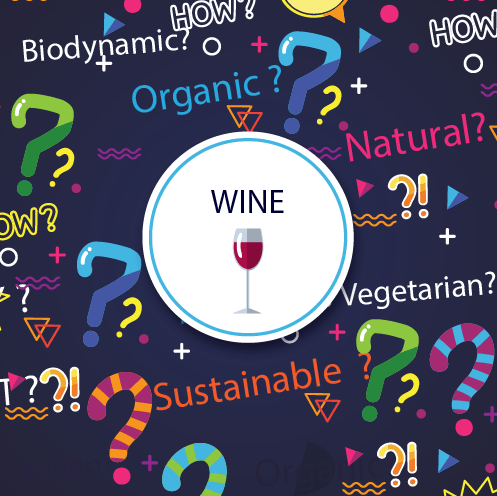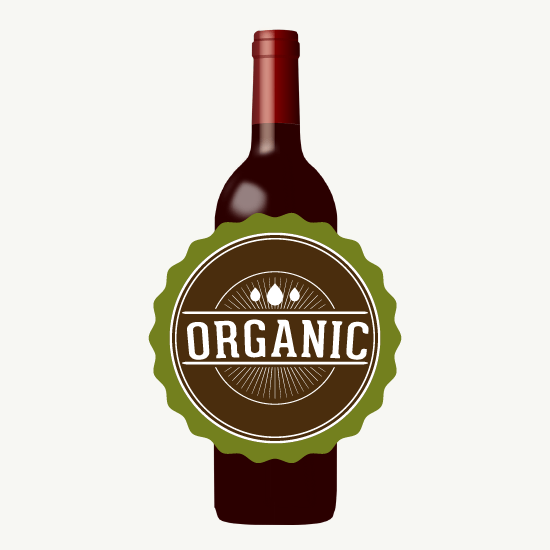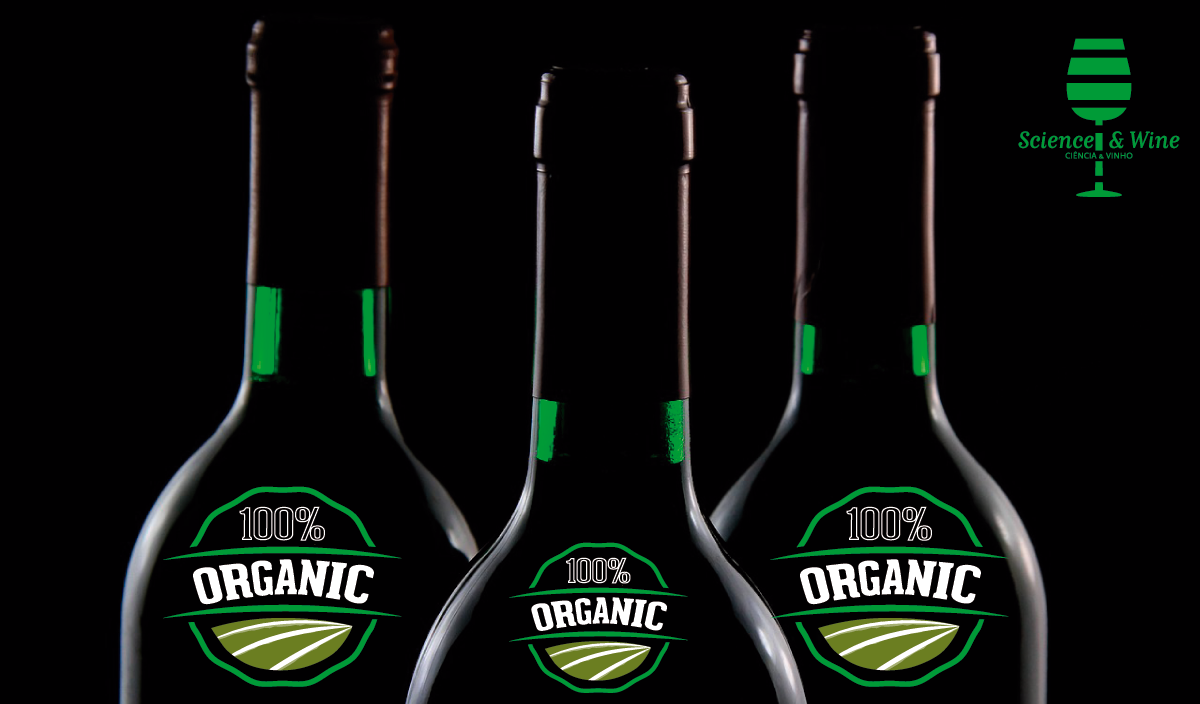By Maria Carla Cravero
Nowadays the wine market proposes organic wines, biodynamic wines and a wide range of wines with different labels or claims without any law or regulation – natural wine, sustainable wines, wines with low environmental impact, vegan and vegetarian wines, wines without suphites – which can confuse the consumers. Biodynamic wines are not regulated by law, but by private associations or by a self-declaration of one producer.
The organic wines represent the 2.4% of the wine global market and their trend is increasing. Their production is regulated by law, but it has not the same meaning in different countries. For example, in Europe organic wine is a wine made using organically grown grapes, but it can contain added sulfites, in the USA organic wine is a product without sulphites.
Jones and Grandjean (2017) evidence that the law differences among countries are a problem for the wine operators. The authors consider the organic wines “a case study of failed category creation.” They studied the evolution of the organic wines from the 1970s and they observed that this wine class did not have the same success than other organic food and drinks, like tea. They also mark the great differences in consumption of organic wines in the world, for example in Sweden is really higher than in the USA, considering the number of inhabitants.

The scientific studies on this subject are still restricted and it is difficult to define the real quality of organic and biodynamic wines. A recent review examines the different aspects related to organic and biodynamic wines:
Cravero M.C., 2019 Organic and biodynamic wines quality and characteristics: A review. Food Chemistry, 295, 15 October 2019, Pages 334-340. https://doi.org/10.1016/j.foodchem.2019.05.149.Several methods of analysis experimented in Italy, Spain, Australia Czech Republic did not evidence great differences between organic and non-organic wines.
Other aspects of the organic wines concern the content of compounds potentially toxic to human health: pesticides and metals, such as copper, deriving from treatments in the vineyard, or ochratoxin A – a mycotoxin produced by several fungal species – and biogenic amines.
Pesticides were not detected in organic juices and wines in Brazil. Their content was significantly lower in concentration and number in organic wines than conventional ones produced in different regions of Croatia. Generally even copper concentration in grapes and wines is within the legal limits. The same for the levels of minerals and trace elements (Al, As, Ba, Ca, Cd, Co, Cr, Cu, Fe, K, Mg, Mn, Mo, Na, Ni, P, Pb, S, Se, Sn, V, Zn) in wines produced in Italy, Slovakia, Croatia and Brazil. Fluoride content was not different in organic and non-organic Spanish wines and it did not exceed the health limit.
The content of biogenic amines (BA) were analyzed in Turkish wines and Chilean organic and non-organic wines, and some differences in the content of different ammines were pointed out. Sometimes, the wines produced with traditionally grapes had greater concentrations of some BA than the wines produced with organically grapes.
The studies did not point out significant differences in the content of ochratoxin A (OTA) between organic and conventional Croatian and Italian wines, in most cases the OTA levels were below the legal limits (2 ng/mL).
A study (Comuzzo et al., 2013) surveyed a high number of samples, of vintages 1999-2007. They were about 1000 organic wines (634 red, 303 white and 34 rosé), produced in Italy, France, Germany, Austria, Spain and Switzerland. Several analytical parameters were determined, including SO2, which was lower than 110–120 mg/L, in compliance with the current European legislation. The OTA levels were quantified in 199 wines and in the 95% of the samples they were within the legally-permitted limits. The BA concentration was determined in 105 samples, and a high content of BA was found in a certain number of wines, attributed to the difficulties in ending the malolactic fermentation.
Phenols and antioxidant activity in organic wines sometimes resulted higher in some Italian organic wines and in some Croatian organic wines than in conventional products, not in other studies carried out in Italy and Spain.
At last, organic wines, in which, unlike non-organic wines, the SO2 must be lower or absent, may undergo premature ageing and present high levels of oxidation compounds. The use of selected indigenous yeasts to reduce the production of these molecules and allow the production of wines with high organoleptic quality.
Studies carried out in Germany did not show important variances in soils in response to biodynamic management in comparison to organic or integrated management approaches. Some differences were evidenced in the soil microbial diversity.

Some papers report the results of the comparison between biodynamic and organic wines. Sometimes, the biodynamic grapes had a better composition (significantly higher sugar content, higher levels of total polyphenols and anthocyanins) and the wines better sensory aspects than the control fruit and the corresponding organic products. Other results show that the type of agricultural and winemaking practice had no impact.
Some authors evidenced that biodynamic and organic wine characteristics tend to be similar after the first year of conversion, implying that high-quality wines can be produced by biodynamic management.
The grape management – organic or biodynamic – affects the yeast population of wines, but the wine composition is associated with the winemaking process, followed by the grape management.
Some specific analysis – proton nuclear magnetic resonance (1H-NMR) and crystallographic analysis – have been experimented to discriminate organic and biodynamic wines.
Some aspects of the biodynamic wine and vineyard management are based upon philosophical tenants, not established science. It is important to test experimentally biodynamic practices that are based on anecdotal evidence.
In conclusion, the published scientific papers report the results obtained on a limited number of grape varieties and wines in a specific area. It is difficult to define the real quality of organic and biodynamic wines and more studies on the subject are warmly welcome.

Maria Carla Cravero
Mail: mariacarla.cravero@crea.gov.it
CREA Council for Agricultural Research and Economics, Research Centre for Viticulture and Enology, Via P. Micca 35, 14100 Asti, Italy
Web of Science ResearcherID H-8091-2019
ORCID 0000-0002-6919-4697
Graduate degree in Agriculture and post-graduate degree in Viticulture and Enology (University of Turin –Italy).
Researcher of CREA Council for Agricultural Research and Economics, Research Centre for Viticulture and Enology, Asti (Italy). Research experience in grape and wine physical-chemical analysis from 1988 to 1997 and from 1997 in sensory analysis of grape, wine and alcoholic beverages. Experience of collaboration for the sensory analysis in projects concerning viticulture, chemical grape composition (polyphenols and aromatic compounds), wine technology and microbiology. Organization of many workshops about wine sensory analysis.
From 2005 to 2015 she was member of Italian delegation to the International Organization of Vine and Wine (OIV) and she contributed to the document: http://www.oiv.int/public/medias/3307/review-on-sensory-analysis-of-wine.pdf
In possession of the professional qualification of Sensory Project Manager issued by the SISS (Italian Sensory Science Society) of Florence (Italian law 4/2013) and ordinary member of the SISS.
She is the author of more than 200 publications.
Guest Editor for the Special Issue Wine traceability per Beverages (ISSN 2306-5710) in 2018.
Reviewer of international Journals (https://publons.com)
She contributed to translate the “Traité d’oenologie” of P. Ribéreau-Gayon, D. Dubourdieu, B. Donèche, A. Lonvaud, form the French to Italian: II edition (2003), III edition (2007) and IV edition (2018).
References
- Comuzzo, P., Rauhut, D., Werner, M., Lagazio, C., Zironi, R. (2013). A survey on wines from organic viticulture from different European countries. Food Control, 34(2), 274-282. https://doi.org/10.1016/j.foodcont.2013.04.039
- Jones, G., and Grandjean, E. (2017). Creating the Market for Organic Wine: Sulfites, Certification, And Green Values. Harvard Business School General Management Unit, Working Paper 18-048: 1–59.

